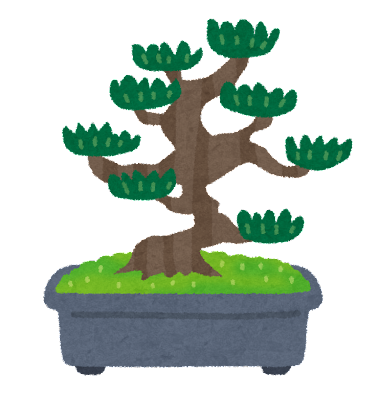This time, I would like to introduce “Bonsai”, a traditional Japanese culture.
If you want to learn about this fascinating art form, this article is for you. Learn about the history of bonsai and where you can see examples of bonsai in Tokyo.
Introduction to Bonsai
Bonsai is a Japanese art form in which miniature trees are grown in pots or trays.
The word bonsai is a combination of two Japanese words, bon and sai.
Bonsai are usually grown from saplings or cuttings, carefully pruned down and shaped.
A bonsai is not just a small tree, it is a living work of art.
The purpose of bonsai is to represent natural wood in miniature.
In order to do this, it is necessary not only to make the tree smaller, but also to shape it so that it looks like a mature tree.
Bonsai growers use a variety of techniques, such as pruning, wiring, and potting, to shape the tree.
The shape of the bonsai can be in various styles such as upright, inverted, diagonal, cascade, half-cascade, literati, and neagari.
Bonsai has a long history and is highly revered.
The first records of bonsai date back to Japan’s Heian period (794-1185).
It is said that the imperial court planted a miniature tree in a pot as an identification card.
Eventually, the art of bonsai spread to Buddhist monks, who began to grow bonsai as a way of representing the natural world in a smaller, more manageable form.
Bonsai eventually left Japan and is now seen all over the world. There are various ways to grow bonsai, and the styles are evolving year by year.
Bonsai is still a popular art in Japan, and there are many places in Tokyo where you can see bonsai.
Bonsai Life
Bonsai can be touched in old hotels in Japan. If you have the chance, please enjoy the world of bonsai.


